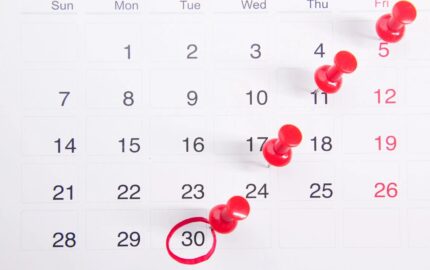Just in time for the weekend, here’s a little list of some of the things I’ve been listening to and reading this week, some of it online — Storyboard included, natch — and some of it on vinyl or actual ink and paper.
Two of my biggest loves are narrative journalism and music, and I’m lucky that my days are filled with both. When reading stories, I get inspired by songs I think fit the article’s theme — a soundtrack. To start out, here are a couple of this week’s Storyboard articles, and their soundtracks:
The Washington Post crosses a storytelling frontier with “A New Age of Walls.” In this piece on the very topical series that ran this fall in The Washington Post about border walls and the people on both sides of them, Allison Eck explores the genre of multimedia longform. She writes, “It’s a relatively new species undergoing a gradual but fierce evolution—and everyone’s trying to figure out how it works. “A New Age of Walls,” a three-part multimedia series by The Washington Post chronicling the global migrant crisis, pushes this species a step further, taking cues from audience behavior and using those lessons to the story’s advantage.”
The soundtrack: “Borders,” by MIA. Such a great song, crossing borders of its own: hip-hop, rai, pop. And how about this lyric?
Borders
What’s up with that?
Politics
What’s up with that?
Police shots
What’s up with that?
Identities
What’s up with that?
Your privilege
What’s up with that?

Covering the last days of Aleppo: Even from afar, the heart breaks. In this piece, Kareem Shaheen talks about the power, and the limitations, of using technology and social media to report on the siege of the Syrian city, which mostly been off limits to journalists. This final graf is wonderful, its last line echoing the words of an Aleppo man who had thanked Shaheen for telling his story: “I didn’t get into journalism to interview people on Whatsapp and Skype. It can’t replace my reporting on the ground, where every building destroyed, every shard of shattered class, every drop of blood I’ve seen has left an indelible mark on me. But sometimes we have to do the best we can with what we have. And sometimes it can carry their voices to the world.”
The soundtrack: Back when I was editing Raja Abdulrahim’s amazing dispatches from Syria for the Los Angeles Times, Radiohead became my band of choice as a Syria soundtrack. (Specifically “Talk Show Host” to start out every story — “You want me? Then fucking well come and find me/I’ll be waiting with a gun and a pack of sandwiches.”) It’s their combination of antagonism and despair, with rocket flares of humanity, I think. For this story, I thought “Wolf at the Door” fit.
What I’m reading online: I spent a good hour yesterday reading the reliably wonderful “The Lives They Lived” feature that runs annually in The New York Times Magazine. My favorites so far tend, predictably, to be the music ones. The list from the authur Colson Whitehead about his favorite things about David Bowie is tremendous. I love that the list starts in the middle of No. 765, like he’s been sitting there talking to a “High Fidelity”-type friend for several hours now and we’re either joining the table or eavesdropping from the next one over. No. 770 is the shortest, and the best: “For the bridge in ‘Young Americans.'” Yes. But I’d also recommend the one on the songwriting genius of Prince, and the story behind his name; the bittersweet one by Elizabeth McCracken on the pain of being the less-talented sons of Frank Sinatra and Dean Martin; the one on astronaut Edgar Mitchell, who had an experience in space that’s kind of a combination of “2001: A Space Odyssey” and that unforgettable scene with the stars in “The Sheltering Sky”; and the one by the great Jon Mooallem about Pedals the upright-walking bear, going beyond the clickbait to suggest why we were both charmed and unnerved by him — the uncanny valley between human and beast.
What’s on my bedside table: I have a major weakness when it comes to fiction: I find it hard to love novels peopled by characters I loathe. You know how everybody raves about “A Confederacy of Dunces”? It took every ounce of my willpower to finish it. And even though Martin Amis is in my top 10 list of favorite writers, I couldn’t bear “Money.” As I say, it’s a weakness, and a bit of a shameful one. Which brings me to The Patrick Melrose novels, by Edward St. Aubyn. Wow, can he write! Every page has at least one killer line. But can he also fill his novels with contemptible people. I know that’s his point, and I’m hoping that now I’ve reached the novel called “Some Hope,” I can find something in my sentimental heart to love.
What’s on my turntable:Although I spend most of my time listening to music on Spotify, sometimes I want to hear the needle touching down on vinyl. This week’s vinyl: “Young Americans,” by David Bowie. I may have already mentioned this album, but the line above about the bridge to the title song made me race to my turntable and put in on again. And if I haven’t mentioned the album before, Side One is my favorite side of a record of all time. Bowie, we can’t have you back, but we can always have this perfect string of four songs (“Young Americans,” “Win,” “Fascination,” “Right”) at that moment when you became yet another persona: the Thin White Duke. We won’t see his like again.
If you want to chat about storytelling (or music), you can reach me at editor@niemanstoryboard.org. Or you can find me at @karihow on Twitter.
Oh, and happy holidays, guys. Storyboard will go dark next week, but it’s a perfect time to sit down with some egg nog and dive into the archives of amazing storytelling and the craft behind it. We’ll be back with new material in the New Year. Here’s to a better 2017.




